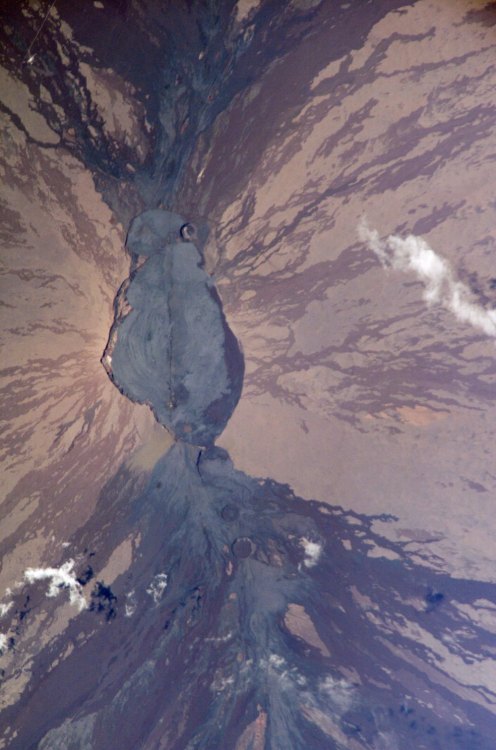Decade Volcanoes - Mauna LoaThe largest volcano on Earth, Mauna Loa, and it’s older incarnatio
Decade Volcanoes - Mauna LoaThe largest volcano on Earth, Mauna Loa, and it’s older incarnations throughout the Hawaiian archipelago all originate from the same source; the Hawaiian hotspot. This mantle up-welling, now situated under the Island of Hawaii or The Big Island (Pop: 185,079), has been a constant source of mafic magma, producing basaltic lavas and the large submarine/sub-aerial shield volcanoes seen throughout the Hawaiian-Emperor sea-mount chain.This hotspot, however, doesn’t supply just Mauna Loa; The Big Island is actually the amalgamation of 6 volcanoes (Oldest to Youngest: Mahukona, Kohala, Mauna Kea, Hualālai, Mauna Loa, Kīlauea). Given that Mauna Loa is in such numerous company, what elevates it above the rest? The flanks of Mauna Loa are home to the largest city on the Big Island, Hilo, with a population of 43,263 (2010), parts of which are built upon recent lava flows. There have been 33 eruptions over the past 150 years, the last of which occurred in 1984. These eruptions typically involve low viscosity, basaltic lavas erupting in the form of fire fountains and lava flows. As lava flows away from the volcano typically move slowly, deaths are rare and the main threat is damage to property.Eruptions are typically contained within a summit caldera, however the threat to populated areas arises when eruptions spread to rift zones to the north-east and south-west. These fissure eruptions cover broad areas in basaltic lava flows, with flows from 1855-56 & 1880-81 covering land now within Hilo’s city limits. Since the last eruption development on the flanks of Mauna Loa has increased, with $2.3 billion in new construction as of 1997, meaning that the next eruption has the potential to cause millions in property damage.Mauna Loa also presents the risk of very large earthquakes and associated tsunamis. As magma is replenished within the volcano, it inflates, causing widespread ground deformation and faulting, creating the capacity for large earthquakes like the magnitude 8 tremor of 1868. As this seismic activity is related to the replenishment of magma within Mauna Loa, the seismic hazard can be linked to volcanic activity level.While Mauna Loa is not, potentially, the most deadly volcano on the list; thanks in part to the preparedness of the Hawaiian authorities and citizens, it most definitely warrants further research and monitoring. Today the volcano, along with Kīlauea and Hualālai, is extensively monitored by the Hawaiian Volcano Observatory (HVO) so that when Mauna Loa erupts again, the island will be ready.For the introductory post on the Decade Volcanoes, or the previous article in this series, Mount Rainier see the links below.RJWHawaiian Volcano Observatory - http://on.doi.gov/1eVVUnIHawaii Center for Volcanology - http://bit.ly/19Wl2cCMantle Connection between Mauna Loa and Kīlauea - http://bit.ly/1eVWnXcIntroduction post - http://on.fb.me/1UrjadrMount Rainier - http://on.fb.me/1K5WOqwImage Credit:Hazard Map - USGS - http://on.doi.gov/1MTKLSo1984 Eruption - USGS - http://bit.ly/1KTuzODSummit Crater - Visible Earth (NASA) - http://1.usa.gov/1SVBdv1 -- source link
#science#volcano#mauna loa#hawaii#fissure#decade volcanoes#iavcei#geology#magma#lava flow#eruption


